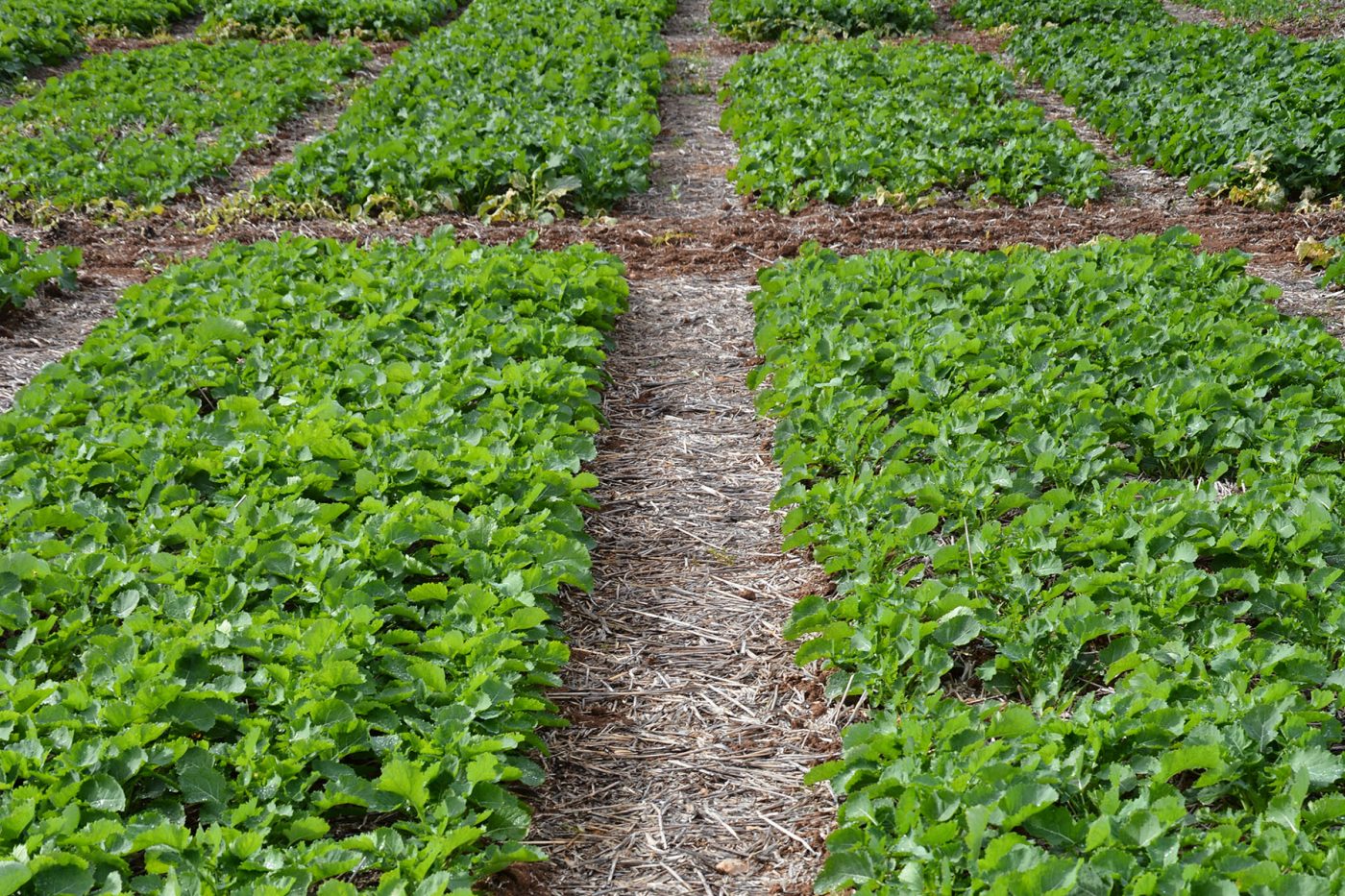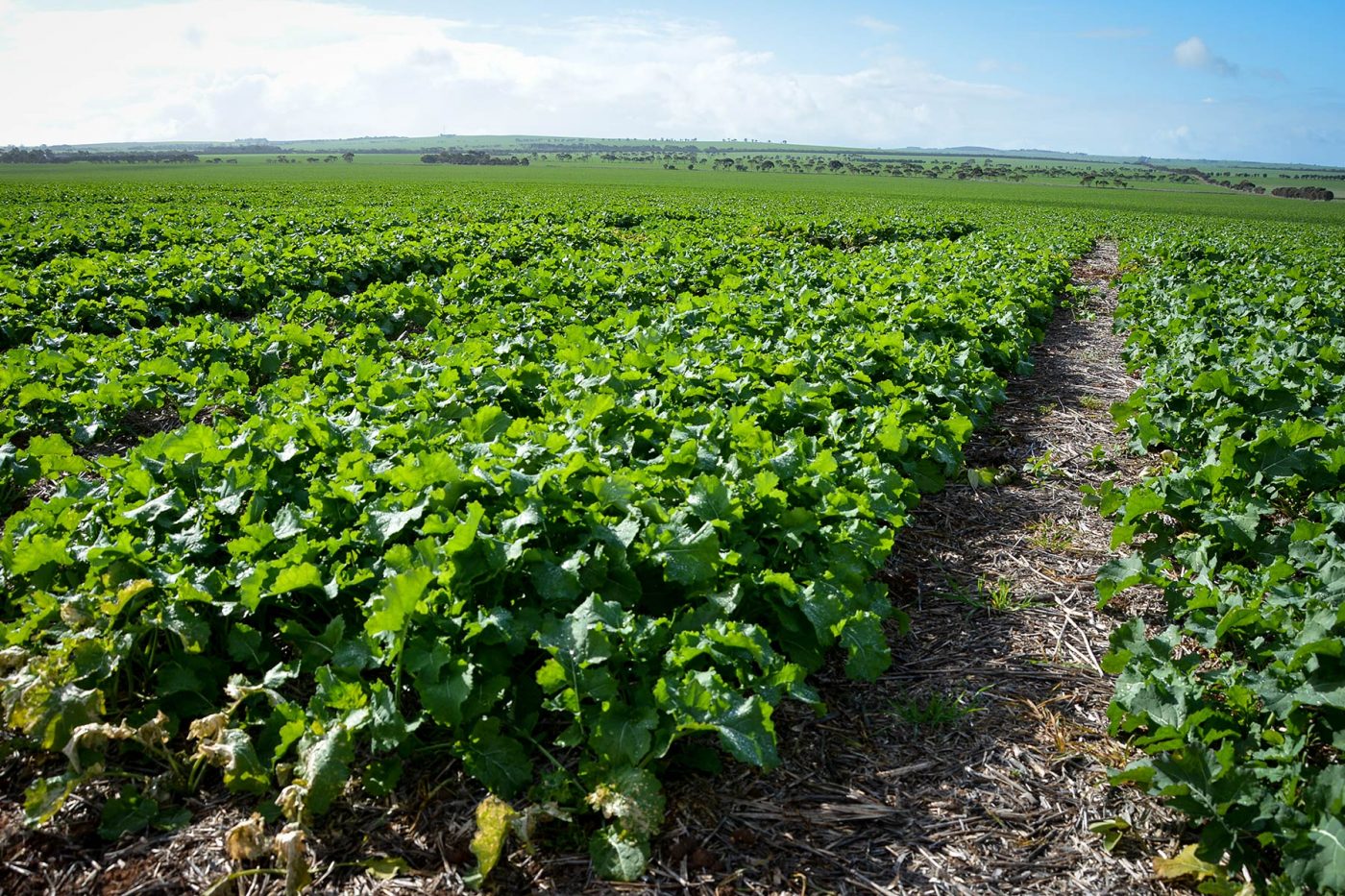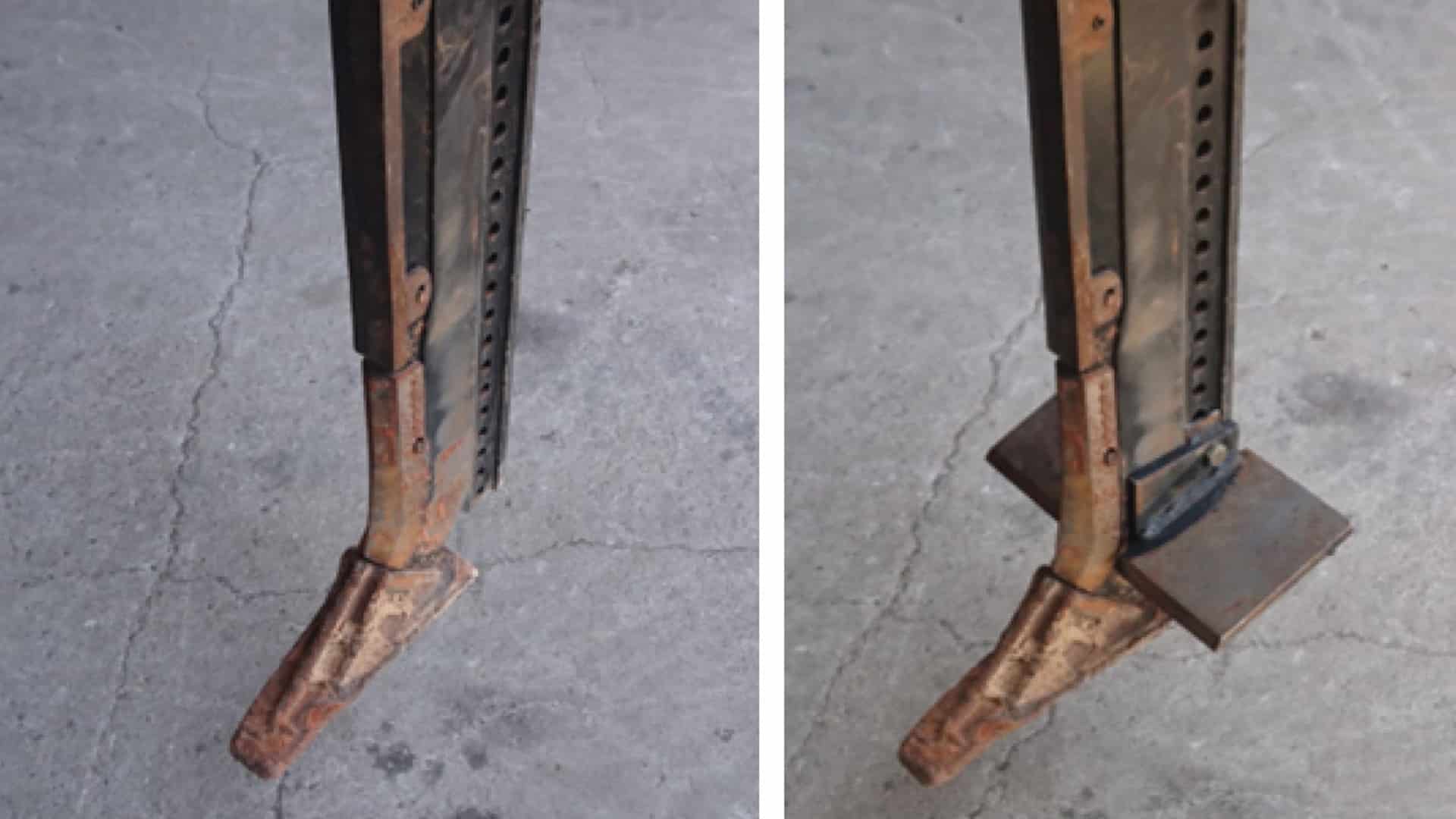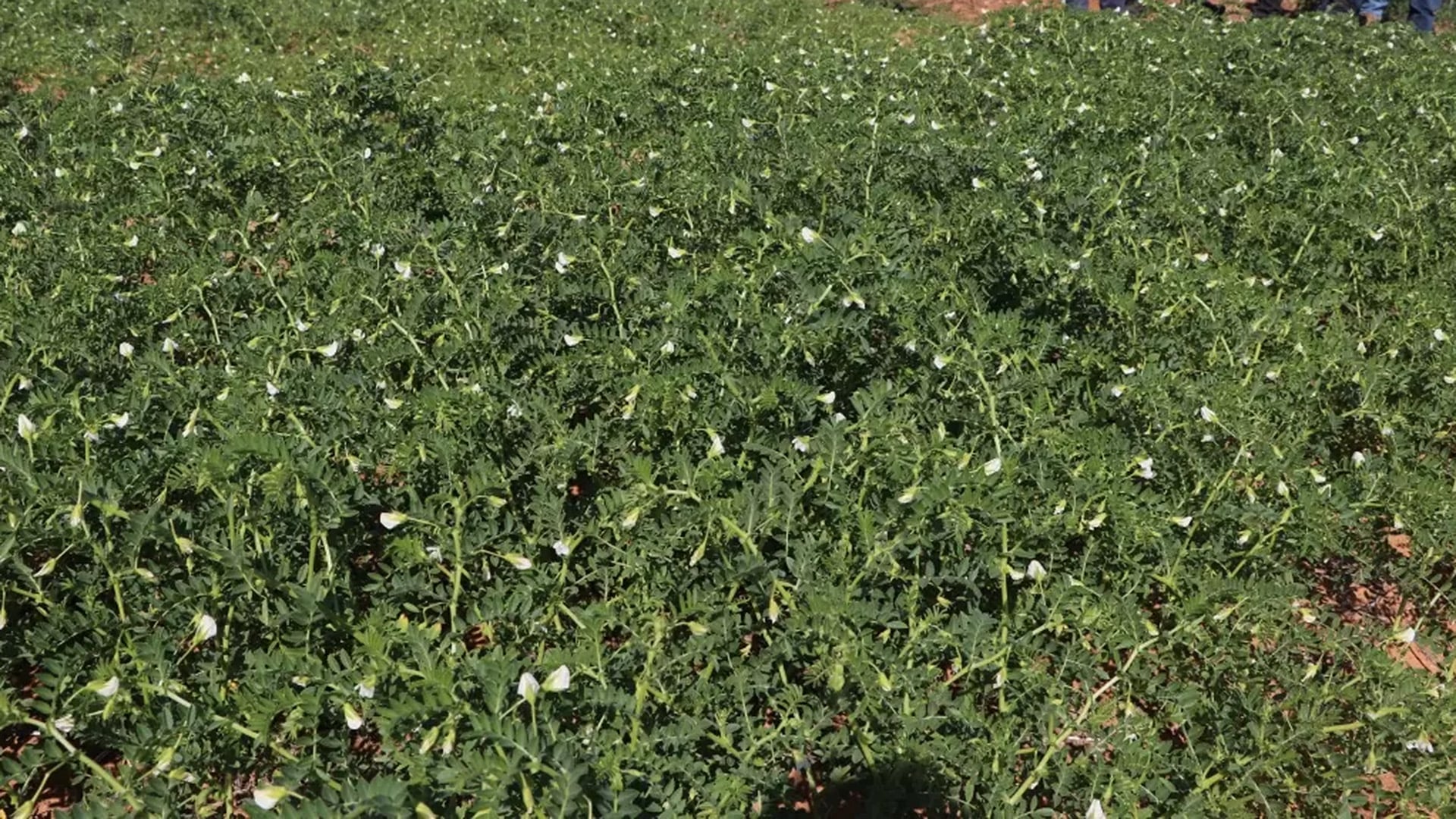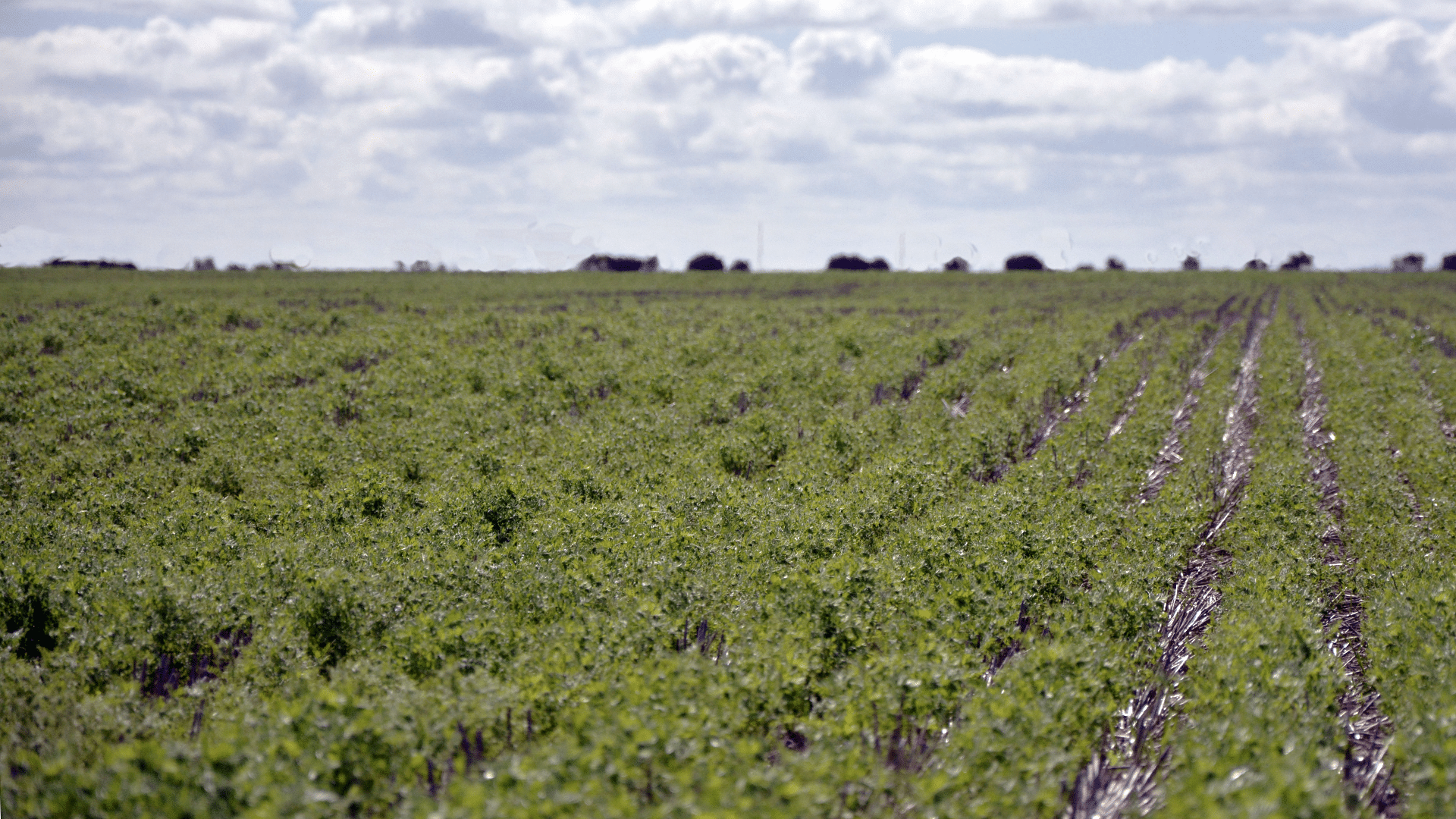START
FINISH
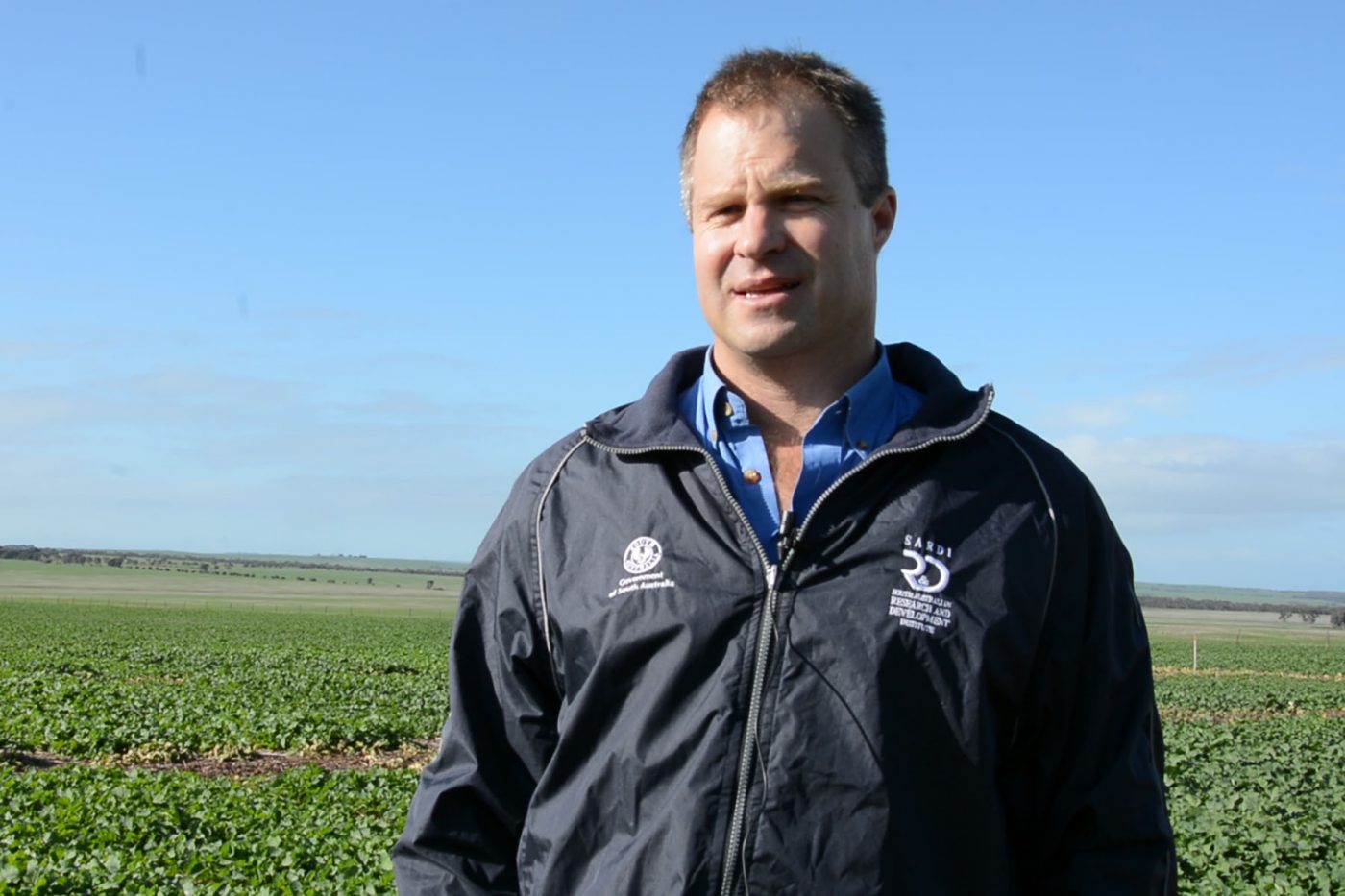
Summary
Trials on the lower and upper Eyre Peninsula studied the effect of sowing time, seed size, depth and sowing rate on canola yields in 2013, 2014 and 2015. Sowing canola early, from mid-April, can give growers on the Eyre Peninsula the best chance of maximising yields, with the trials showing a one per cent yield penalty per day delay from 20 April.
Higher seeding rates improved yields, while shallower sowing increased yields on sandy soils but not heavier soils.
Background
Canola is different to many of the grain crops commonly grown in South Australia in that the seed is much smaller than alternative crops and it only needs to be planted at low rates. Establishment is critical to optimising canola yields. Grain yields are maximised when 90 per cent ground cover is achieved prior to bud appearance.
Changes in seeding technology and farming systems are leading to growers wanting to plant canola dry into a range of soil types. In addition, the high value of hybrid canola seed adds to the risk of growing the crop and increases the need for successful establishment.
This project investigated gaps in knowledge around time of sowing, seeding rate and depth that have arisen due to changes in farming and seeding systems that have occurred since canola was first developed as a crop in the 1970s to 1990s.
Research Aims
The core objectives of the project were to:
• Develop management practices that will significantly improve canola establishment on a range of soil types on the Eyre Peninsula; and
• Develop best management practices for dry sowing of canola.
In The Field
Thirty-three field experiments were conducted over three years, at four locations chosen to represent a range of soil types and rainfall:
• Wanilla /Edillilie on the lower Eyre Peninsula – duplex sandy loam with 530mm annual rainfall. The first two years were conducted at Wanilla with the third at nearby Edillilie.
• Yeelanna, lower Eyre Peninsula – red brown earth, 410mm rainfall
• Minnipa, upper Eyre Peninsula – sandy loam calcasol, 325mm rainfall
• Piednippie, upper Eyre Peninsula – grey calcareous sandy loan, 324mm rainfall.
In each year, two main experiments were sown. The first was time of sowing experiments at Minnipa and Wanilla / Edillilie, which aimed to evaluate four different sowing times from mid-late April. The second was an emergence trial, conducted at all four locations, which compared four different varieties, three different seeding depths and three different seeding rates.
Results
Delaying sowing from mid-late April at each site had a major effect of reducing yield; with the effects of variety, sowing depth and seeding rate minor compared to the time of sowing. A yield loss of about one per cent was found for each day seeding was delayed after 20 April.
In two instances where canola was planted before and after a rainfall event, the yield was significantly higher from planting soon before than after the rain, even though plant establishment was similar.
In the emergence trials, seeding rate consistently increased yields, with yield increasing by an average of 10 per cent when the sowing rate increased from 1.5 kilograms per hectare (kg/ha) to 4.5kg/ha. The effect of seed size and depth was mixed. In the sandier soils of Piednippie and Wanilla/Edillilie yields were lower when the seed was planted at four centimetres, with yield penalty of about three per cent at Piednippie and 20 per cent at Wanilla/Edillilie. At Yeelanna and Minnipa there was no penalty from deeper sowing.
Project Participants
SARDI: Andrew Ware, Brian Purdie, Brenton Spriggs.
The Problem
Establishment is critical in canola production as maximum yields are achieved from crops which have at least 90 per cent ground cover prior to bud appearance. Sowing small seeds, at low rates, close to the surface can often lead to establishment problems.
The research
Trials were conducted comparing sowing time, depth, rate and seed size on four sites on the lower and upper Eyre Peninsula over three years.
More information
Andrew Ware, SARDI
T:08 8688 3417
E: [email protected]
Value for Growers
• Early sowing canola from mid-April provides growers with the best chance of maximising yields.
• Sowing canola just before a rainfall event achieved higher yields than sowing just after.
• Higher seeding rates consistently improved yields across a range of soil types.
• Sandy soils experienced a yield penalty when sowing too deep.
• It is unlikely that re-sowing a poorly established crop will increase yield if at least 15 plants per square metre have established.

